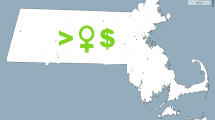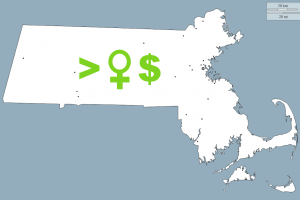Tech and Diversity: We’re Tired of Talking About it Too
David McCandless is a brilliantly talented information designer in the UK. He and his team at Information is Beautiful take complex sets of data that have multiple variables and arrange them into beautiful, and instantly understandable graphics.
For the third year in a row, he and his team have released information on the organizational makeup of the top tech industries, most of which are located in Silicon Valley. Unfortunately, for the third year in a row, the term “diversity” is more a question than a statement about the tech industry.
For reference, the graphic also compares the general population percentages of women and minorities to hiring practices. For every argument that tech has always been filled from the start with men more interested in coding, that’s simply no longer true. Women make up 24% of the workforce of technical positions nationally. However that number is decreasing, often with statements of discouragement and bias. Unfortunately, even for women in tech, there are reports of women facing more rejection of their code and work, as reported at Facebook.
The tech companies highlighted in the Information is Beautiful graphic have a very wide variety of roles, yet still fall well behind in diversity. There are enormous marketing and sales departments, HR, customer service, account management, events management, innovation, industry subject matter experts, creative, design and many other areas of expertise. There is no justifiable reason for the gender gap or for the gaps in minority hiring.
While the Information is Beautiful report changes little from year to year, the marketing campaigns promoting diversity at major companies are increasing and becoming more sophisticated and highly produced. We’re really hoping all of that marketing turns into actual, measurable numbers at some point. However, a common practice in Silicon Valley is hiring through friends of employees first, It is a practice strongly encouraged and internally promoted as the best way to hire – which can again encourage the creation of circles of sameness. Recruiters and Human Resource departments need to work together to take a closer look at diversity and they types of companies they want to build. The friends network is failing and ensuring that diversity is seen as a very “outside hire” versus a celebration of finding the best candidate.
It would seem there is also a cost associated with the current hiring practices. The average tenure of many of these companies (as reported on LinkedIn career pages for any company) tends to average 2 years in Silicon Valley. One of the defences of the ‘friends network’ of hiring, is that new hires fit right into the environment, thus building good teams. Yet, it would seem with such short tenure, the friends network is not creating the best workforce, but a transient one. The high rate of employee turnover has an impact on the bottom line, with a continual need for training and ramp up, while overall productivity is limited by employee turnover, gaps in talent and operations, and a loss of continual employee investment that has a limited return.
Reference: http://www.informationisbeautiful.net/visualizations/diversity-in-tech-static/
Marketing of Diversity: Not as Good as Diversity
Pinterest – a company with an 85% female user base – hired a head of diversity to help address the company makeup and hiring. Salesforce went so far as to each case a Chief Equality Officer.
However for all of the effort in marketing, the numbers just don’t seem to move over several years. It is understandable that changes in organizational structures and hiring practices of large companies can take time, but year over year there is so little change. However, it’s clear organizations know there are problems as there is such an effort in marketing campaigns and career content to represent the diverse staff they envision having, which appear to be a workforce any 1990s Benneton casting director would envy. If the marketing was an accurate representation, diversity issues would be clear to everyone. Perhaps, if marketing were ramped up to a greater degree AFTER accomplishing some positive changes, we would all win, and feel better about the ability to trust a company’s messaging.
Some of the public postings and marketing from top tech companies:
https://blog.pinterest.com/en/2016-update-diversity-pinterest
https://www.oracle.com/corporate/careers/diversity/index.html
https://www.google.com/diversity/
https://www.microsoft.com/en-us/diversity/
https://www.salesforce.com/company/equality/
https://blog.linkedin.com/2016/10/18/linkedin-2016-workforce-diversity-data



















